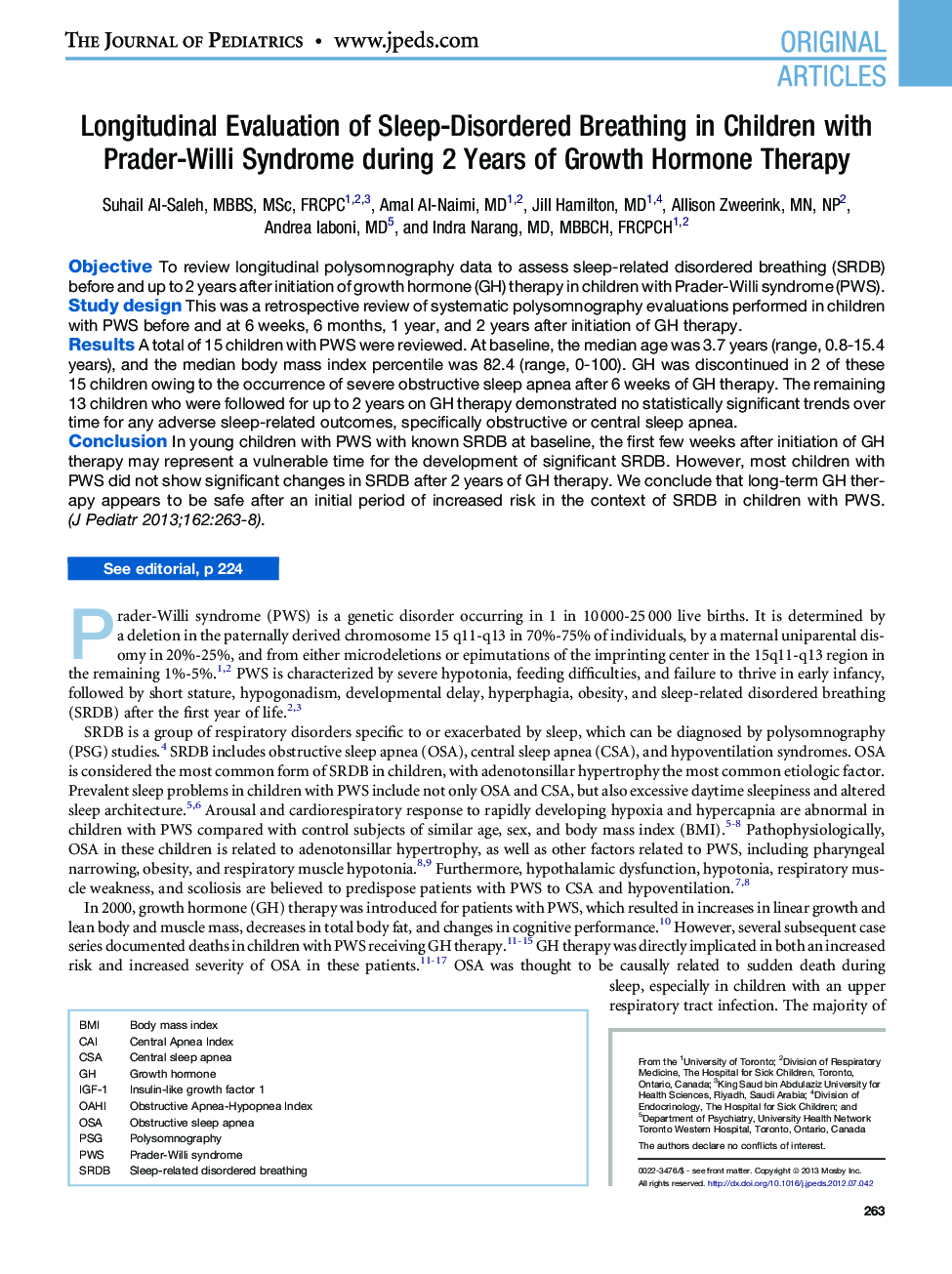| Article ID | Journal | Published Year | Pages | File Type |
|---|---|---|---|---|
| 6223834 | The Journal of Pediatrics | 2013 | 7 Pages |
ObjectiveTo review longitudinal polysomnography data to assess sleep-related disordered breathing (SRDB) before and up to 2 years after initiation of growth hormone (GH) therapy in children with Prader-Willi syndrome (PWS).Study designThis was a retrospective review of systematic polysomnography evaluations performed in children with PWS before and at 6 weeks, 6 months, 1 year, and 2 years after initiation of GH therapy.ResultsA total of 15 children with PWS were reviewed. At baseline, the median age was 3.7 years (range, 0.8-15.4 years), and the median body mass index percentile was 82.4 (range, 0-100). GH was discontinued in 2 of these 15Â children owing to the occurrence of severe obstructive sleep apnea after 6 weeks of GH therapy. The remaining 13 children who were followed for up to 2 years on GH therapy demonstrated no statistically significant trends over time for any adverse sleep-related outcomes, specifically obstructive or central sleep apnea.ConclusionIn young children with PWS with known SRDB at baseline, the first few weeks after initiation of GH therapy may represent a vulnerable time for the development of significant SRDB. However, most children with PWS did not show significant changes in SRDB after 2 years of GH therapy. We conclude that long-term GH therapy appears to be safe after an initial period of increased risk in the context of SRDB in children with PWS.
